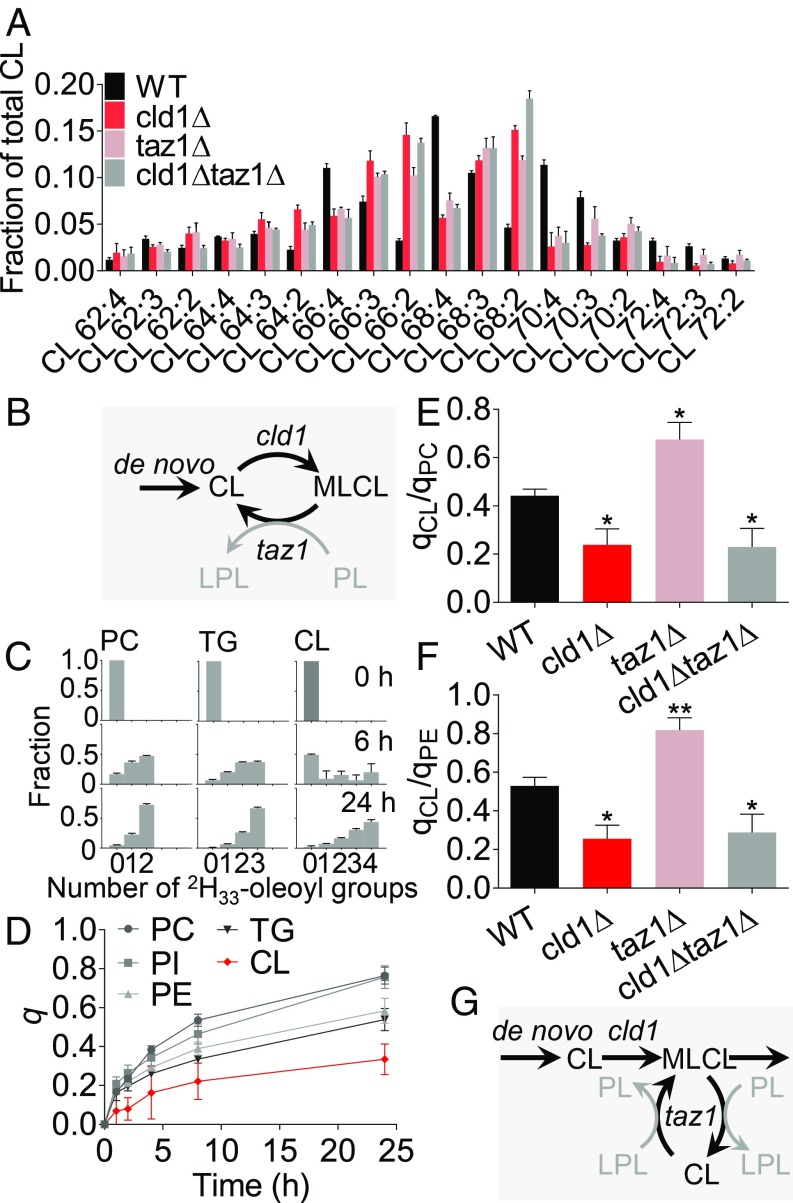Fig. 1.
Taz1 and Cld1 have opposite effects on the turnover of CL in yeast. (A) Yeast strains were grown in YPGE to the midlogarithmic phase. Lipids were analyzed by MS. Data are mean values ± SEM (n = 3). (B) In the conventional remodeling mechanism, cld1 and taz1 create a deacylation-reacylation cycle. (C–F) Yeast cells were grown in YPGE supplemented with 2H33-oleic acid. Cells were harvested at the indicated time points, and lipids were analyzed by MS to determine the isotopomer pattern of dioleoyl-phosphatidylcholine (PC), dioleoyl-phosphatidylethanolamine (PE), dioleoyl-phosphatidylinositol (PI), trioleoyl-glyceride (TG), and tetraoleoyl-CL. The fractional synthesis (q) was calculated from the isotopomer patterns. After 24 h, the ratios of fractional syntheses of CL to PC (qCL/qPC) and of CL to PE (qCL/qPE) were determined. Data are mean values ± SEM (n = 4). Comparisons between mutants and wild type were made by t test (*P < 0.05; **P < 0.01). (G) In the revised remodeling mechanism, cld1 and taz1 act consecutively. First, cld1 forms MLCL, then taz1 redistributes acyl groups between CL, MLCL, and other phospholipids (PL) and lysophospholipids (LPL). Remodeling by taz1 protects CL from degradation.

